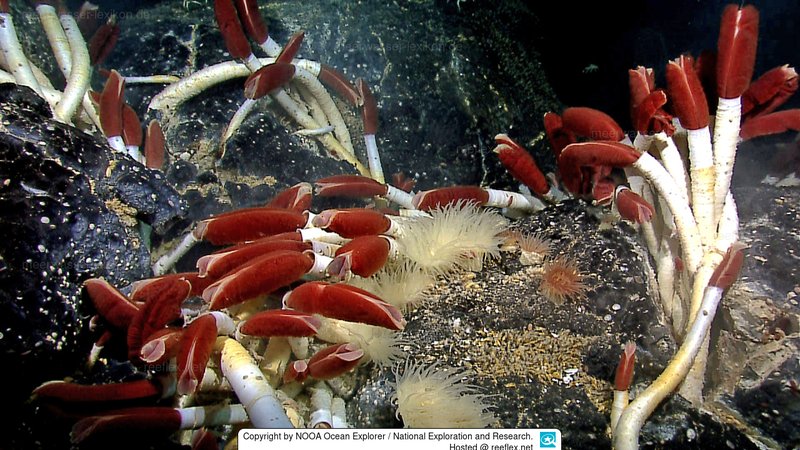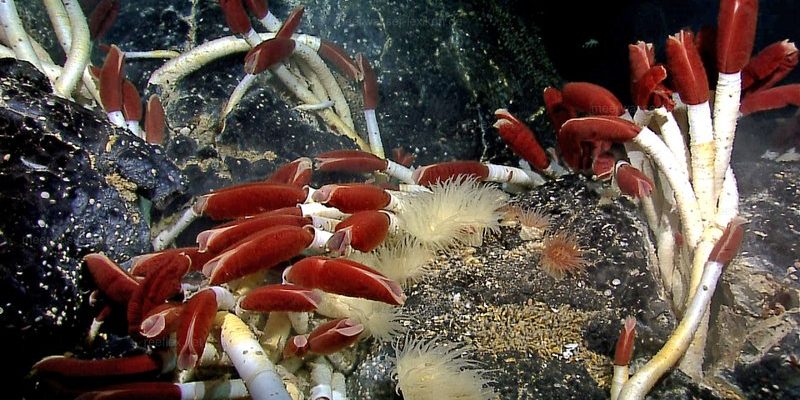
Unlike many animals, Riftia pachyptila has a unique way of mating and laying eggs that might leave you scratching your head. Imagine a huge underwater city, teeming with life and energy, where these worms don’t just survive—they thrive and multiply in a harsh environment. In this article, we’ll dive deep into the reproduction process of Riftia pachyptila, from mating rituals to the fascinating journey of their larvae. So grab your metaphorical scuba gear, and let’s explore!
The Mating Process of Riftia Pachyptila
Mating in Riftia pachyptila is a bit different from what you might expect. These worms have a reproductive strategy that’s as unique as their habitat. To start, Riftia pachyptila is a dioecious species, meaning that there are distinct male and female worms. During the breeding season, which usually occurs in the spring, these sea creatures come together in their colonies to reproduce.
Here’s the intriguing part: male and female worms release their gametes—sperm and eggs—into the water simultaneously. This is a bit like a synchronized swimming routine but underwater! The method used ensures that a good number of eggs are fertilized, as the sperm released floats around, seeking out eggs in the vast ocean. It’s a gamble, but when conditions are right, it works beautifully.
Interestingly, the larval stage is critical for their survival. Once fertilized, the eggs develop into larvae that drift through the ocean currents, a journey that can take several weeks. During this time, these tiny larvae must avoid predators and find a suitable place to settle down and grow into adult tube worms.
Egg Development in Riftia Pachyptila
Once fertilized, the eggs of Riftia pachyptila go through several stages of development. In a nurturing environment like hydrothermal vents, these eggs can develop into larvae. The eggs are typically surrounded by a protective capsule, which helps safeguard them from harsh conditions and predators.
During the early days of egg development, the embryos receive nourishment directly from the egg yolk before they hatch. You see, it’s like a little package of goodies keeping them fed and safe. Once the larvae hatch from the eggs, they enter an entirely new phase of life.
The young larvae are free-swimming and tiny, measuring just a few millimeters. At this stage, they possess cilia—tiny hair-like structures that help them swim through the water. During this time, they must be incredibly lucky and navigate the ocean currents to find a spot where they can settle down.
Life After Hatching: The Journey of Larvae
After the larvae hatch, they begin their incredible journey. They float through the ocean, carried by currents for weeks or even months. This free-swimming period is crucial. The larvae are on a quest to find a new home, and they have to be quite savvy.
Some might come across rocky surfaces or other hard substrates, which are perfect for settling down. Here’s the thing: when they find a suitable spot, they will attach themselves and begin the transformation into adult tube worms. This is a significant change—like moving from a bustling city to a cozy home.
During this time, they also develop a symbiotic relationship with bacteria. These bacteria help them digest the minerals found in the vent water, which is crucial for their survival. It’s a team effort! Without these helpful bacteria, the worms wouldn’t thrive in their extreme environment.
The Importance of Habitat in Reproduction
Habitat plays a significant role in the reproductive success of Riftia pachyptila. They thrive in specific environments near hydrothermal vents, where nutrient-rich water is abundant. These vents create an ecosystem that supports a variety of life forms, including the colonies of tube worms.
If the temperature or chemical composition of the water changes, it can drastically affect reproduction. For example, if the vents become inactive, the food supply dwindles. This impacts not only the adult worms but also their larvae. Without a suitable habitat, the entire life cycle could be disrupted.
Riftia pachyptila is a fascinating example of evolution in extreme conditions. By being able to adapt to their environment, they help maintain the delicate balance of life in these ecosystems. Their reproduction strategy reflects that synergy between the organisms and their surroundings.
Threats to Riftia Pachyptila Reproduction
Unfortunately, Riftia pachyptila faces several threats that can impact their reproduction and overall existence. Human activities, such as deep-sea mining and pollution from industrial waste, can disrupt their habitats.
If these habitats are damaged, it can lead to a decline in their population. Moreover, climate change causes shifts in ocean temperature and chemistry, which can also affect their reproductive success. The delicate balance that allows Riftia pachyptila to thrive is threatened by human intervention and environmental changes.
Preserving these habitats is crucial for the survival of these unique creatures. Efforts to monitor and protect hydrothermal vents can make a significant difference for Riftia pachyptila and the entire ecosystem that relies on these essential habitats.
The Future of Riftia Pachyptila Reproduction
Looking ahead, continued research on Riftia pachyptila and their reproduction is essential. Understanding their life cycle can help us learn more about the deep-sea ecosystems and how to protect them. Given the threats they face, knowledge is power.
Conservation initiatives are necessary to ensure that these remarkable tube worms have a fighting chance. By raising awareness about their importance and the challenges they encounter, we can contribute to preserving their habitats. Every little effort can help in the long run, ensuring that future generations can marvel at the beauty of Riftia pachyptila and their fascinating reproduction methods.
In conclusion, the world of Riftia pachyptila reproduction is as intriguing as the creatures themselves. From their unique mating process to the critical journey of their larvae, every aspect is a testament to the wonders of life in extreme environments. By understanding and protecting these remarkable organisms, we take steps toward ensuring they continue to thrive in the deep ocean.

